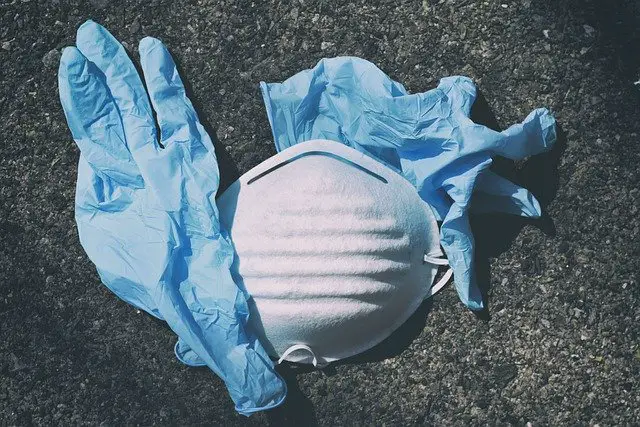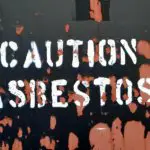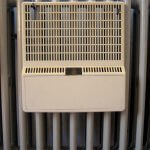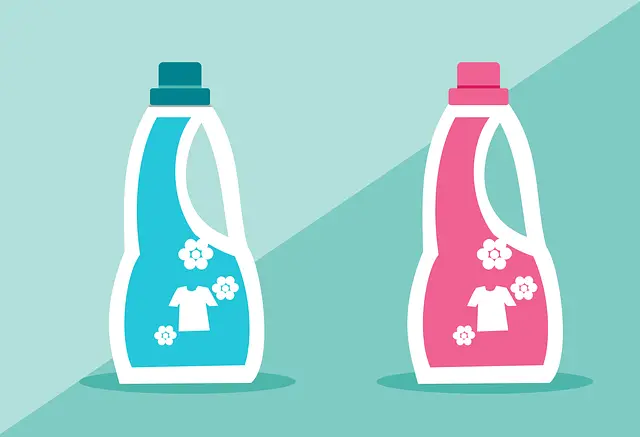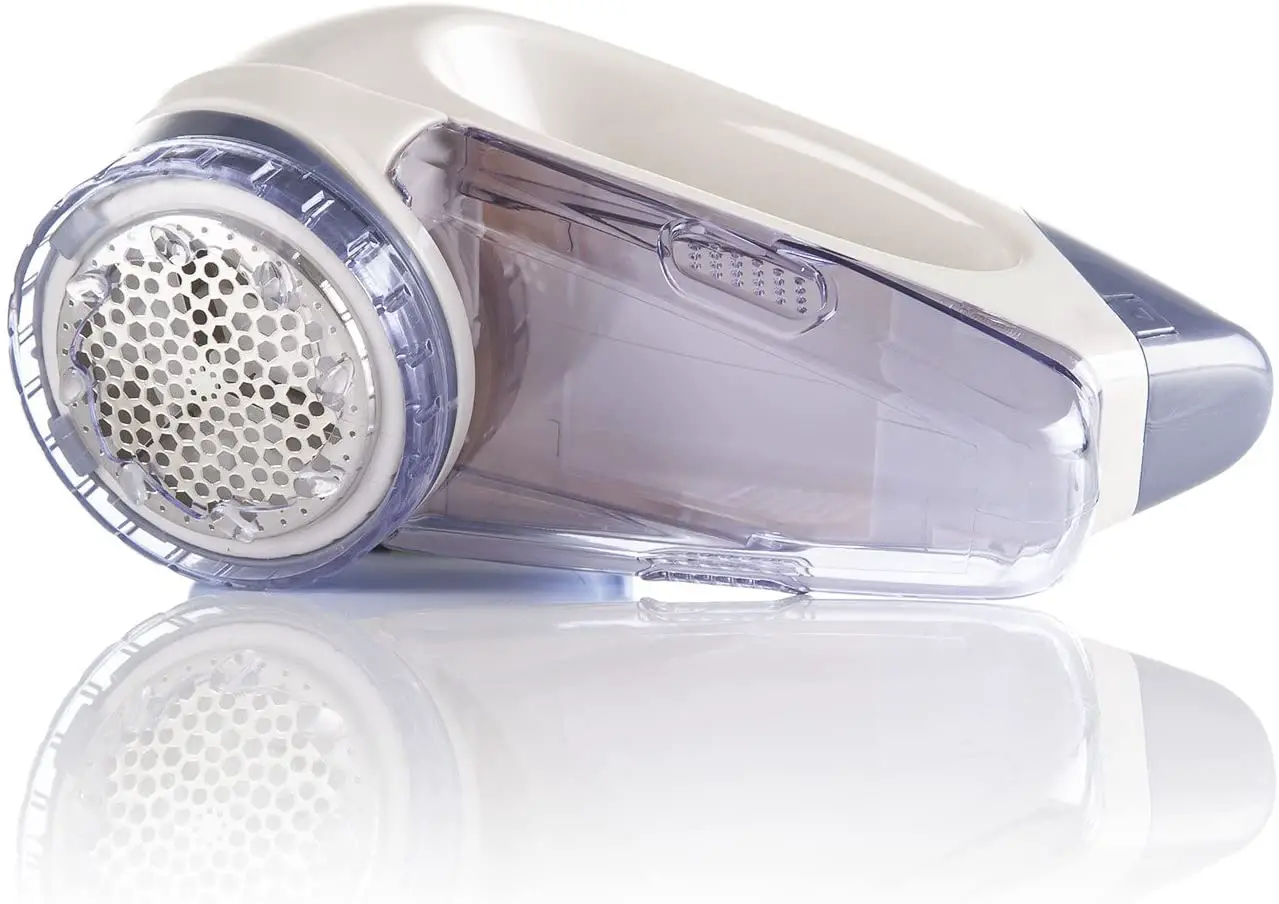Want a quick answer? Asbestos removal costs roughly £50-60 per m2, but keep reading to find out more.
I recently got my garage removed, and as part of this, the roof was asbestos. Still, I found it hard to figure out how much it would cost to remove as a lot of the guides on the internet aren’t fantastic and don’t cover it in a lot of detail. If you are looking to get an Asbestos removal cost to find out whether it’s worthwhile removing initially? That’s something we can help with. We break down the cost of removing Asbestos per sq m2, take a look at some of the prices of typical jobs and how you can calculate how much it’s going to cost you.
We can also supply you with quotes from local tradespeople & easily find you the lowest removal price.
What you will find out in this article:
- Everything you need to know about Asbestos
- Whether you can remove it yourself
- Asbestos removal cost
- How to get a quote for removal
It’s a rather long article, so if you wish to navigate to the section that best suits your query then you can do so by clicking the links below:
What is Asbestos?
Asbestos is a select group of minerals made from microscopic fibres. Before its risks were recognised, asbestos had been frequently utilised in buildings such as insulation, roofing and flooring. It sprayed on walls and ceilings, meaning you can find it in older construction both inside and outside your home.
It’s currently banned in the United Kingdom. In the event the asbestos-containing materials within these buildings remain intact, they pose very little danger, so you don’ have to remove Asbestos straight away. Still, if you recognise some you should always plan to remove it. Anything newly built won’t use Asbestos within the construction.
It is only when these substances are damaged or upset that tiny asbestos fibres can be released into the air and breathed into your lungs, which can cause serious issues.
It can be hard to tell when you’ve been affected by Asbestos, the indicators of asbestos-related disease take several years after the initial exposure to asbestos, thus vulnerability quite a while ago may just be showing up as a disorder now. Four primary diseases can be caused by Asbestos inhalation, which are asbestosis, mesothelioma, lung cancer & non-malignant pleural disease.
So as you can tell, it’s essential to get rid of Asbestos properly, and you should always look to hire an expert.
Where can I usually find Asbestos?
It can be hard to identify asbestos, but there are a few common items across the home, inside and out, which could contain asbestos and you should always be sure to get a survey before disturbing it.
Here are some of the frequent areas that asbestos was commonly used in the past:
- Door gaskets in wood & coal stoves as well as furnaces – Worn seals can release asbestos fibres during use, so be careful.
- Decorative material or soundproofing – sprayed on walls and ceilings. Loose, crumbly, or water-damaged material may release fibres. So will sanding, drilling, or scraping the material.
- Joint compounds and patching – for walls and ceilings. Sanding, scraping, or drilling these surfaces may release asbestos.
- Textured paints – Some old texture paint designs may contain asbestos.
- Siding, singles or cement roofing – These goods aren’t likely to release asbestos fibres unless sawed, dilled, or cut. This is a commonplace to find asbestos as they used to bind it with cement.
- Artificial embers or ashes – These were sold for decorative use at gas-fired fireplaces. Also,
- Fireproof gloves, ironing board covers, hairy dryers and stove-top pads
- Vehicle brake pads and linings, gaskets and clutch facings.
- Homes built between 1930 and 1950 may have asbestos as insulation.
- Walls and floors around woodburning stoves may be protected with asbestos paper, millboard, or cement sheets, this, of course, is only if you’re wood burner is old.
- Asbestos is found in some vinyl floor tiles and the backing on vinyl sheet flooring and tiles.
- Heated water and steam pipes in older houses may be coated with an asbestos material or covered with an asbestos blanket or tape.
- Oil and coal furnaces and door gaskets may have asbestos insulation.
What are the types of Asbestos?
We wrote a whole post on this previously all about the types of asbestos, how to identify them and which ones are dangerous, but to provide you with some insight here are the different types.
In the UK you’ll commonly find 3 main types of Asbestos, which are called Amosite, Chrysotile & Crocidolite, but there are also 3 other “minor” types but these aren’t often found, however for reference they are Actinolite, Anthophyllite and Tremolite.
Digging into the three main types:
- Amosite
- Chrysotile
- Crocidolite
This is also commonly referred to as Brown Asbestos and it’s considered to be very dangerous, it’s technically referred to as Grunerite. It’s an Amphibole type of Asbestos and is very strong, it’s often mixed with Chrysotile too.
By far the most common UK Asbestos is Chrysotile, it goes by the other name of White Asbestos and it’s a soft material often used in bonding cement, regularly found in roofing or old garages.
Just like the other two, it has another colour based name, this one is referred to as Blue Asbestos and you often find it in pipe insulation and it’s an Amphibole type of Asbestos, but it’s probably the one you are least likely to find out of the three.
Do I always need to remove Asbestos?
Many people are exposed to small quantities of asbestos without even knowing, as all of us are in our daily lives, and typically most of us don’t develop any health issues. However, if disturbed, asbestos material may release dangerous fibres which can cause harm if inhaled. The fibres can stay there for quite a while, raising the possibility of disease which obviously makes it quite a bad health threat.
Do not worry if you think asbestos may be in your house! The best thing is to leave asbestos material as long as it’s in good shape and undamaged. Generally, material in good shape won’t release fibres. There’s not any danger unless fibres are discharged and inhaled into the lungs which won’t happen if the area remains undisturbed.
Make sure to check the material regularly in the event that you suspect it might contain asbestos. Look for signs of wear or damage such as tears, abrasions, or water damage, although always make sure that you do not touch it without property safety equipment.
The best approach to deal with slightly damaged material is to limit entry into the area that contains asbestos if at all possible, and make sure not to touch or disturb it.
If asbestos material is more than slightly damaged, or if you’re likely to make adjustments in your home that might disturb it, repair or removal by a specialist is required. Before you have your home remodelled, find out whether asbestos materials are present which you can do by getting an asbestos survey.
Can I & should I remove Asbestos myself?
There are several distinct varieties of asbestos and a certified contractor must remove many of them. The only one that you are allowed to remove yourselves is cement asbestos which is generally found to sheds and garages as sheets or roofing.
Want to do it yourself? Well here is a few tips before you get started:
The things you should do:
- Maintain the surfaces of the planks moist, but prevent any chance of water coming in contact with electric appliances or supplies.
- Where possible eliminate the sheets intact. Avoid breaking the material up.
- Where sheets have been held in place by bolts, spring-headed claws or other fixings, attempt to harvest the heads of their fixing and raise the sheets clean, instead of attempt yanking the fixing or split the sheet around the fixing.
- Wear overalls, rather disposal overalls, should not make sure you wash them. Sometimes you might be advised to wear protection like goggles and a mask, which we would advise.
- Lay polythene sheeting on the ground and on flat surfaces that can’t be hosed and cleaned down (e.g. inside ). Dispose with all the asbestos waste of this sheeting.
- Smaller bits need to be set in a tote or polythene bag whenever they’re removed. All asbestos ought to be wrapped in polythene. Make sure you destroy the cloths that are used.
- Wash your hands prior to smoking or eating. Clean face, your hands and hair after eliminating your overalls and finishing the job.
Things you shouldn’t do:
- Do not use any tools onto any debris material. .
- Do not use a vacuum cleaner to clean the mess up. The fibres will be dispersed by them, rather than being hoovered up.
- Do not carry debris throughout your house if you can prevent doing so.
- Do not worry – these basic safety precautions are all you need to secure guard yourself and people around you.
The waste wrapped in polythene ought to be dampened with water or bagged, and sealed.
As for the answering whether you should remove it yourself, it depends on how confident you are in your DIY ability. Getting a professional to remove Asbestos, generally speaking, isn’t too expensive, it’s one of those things personally that I wouldn’t attempt, but if you’re more confident than myself, go for it, just be careful and wear safety protection.
How much does Asbestos removal cost?
It’s very hard to give you a set cost for Asbestos removal without knowing what the job is, it varies from job to job-based on the amount of Asbestos that needs to be removed. Later in the article, we’ll touch on how to figure out a rough removal cost for a particular job based on the square metre coverage.
Asbestos removal can literally range anywhere from £100 to £2,500+ dependant on the amount.
If you are unsure whether it is actually asbestos, however, you’ll need an asbestos survey which will usually cost around £50, depending on which company or tradesmen you go with, although an expert should usually be able to know whether it is Asbestos just by looking at it.
Asbestos removal cost per sq m2
As an estimate, the cost of removing and disposing of Asbestos is typically around £50-60 per square metre.
You also have an alternative option to encapsulate the Asbestos, although we wouldn’t necessarily recommend it because you will likely have to remove it at a later date anyway. The cost of doing this is much cheaper however at around £8-10 per square metre.
Calculating Asbestos removal cost
Now you know the removal cost per square metre it should be relatively easy to figure out the cost of removing the Asbestos. You can figure out the square metre coverage by following these steps:
- Get a measuring tape
- Measure the length of the area
- Measure the width
- Convert your measurements from centimetres to metres
- Multiply the length and the width
- You have your m2 figure
Then you simply times this by £50-60. As an example, 2.5m2 equals £125 – £180.
What to look for when hiring an Asbestos removal specialist
Looking to hire a professional? There are a few things you should consider before hiring an Asbestos specialist, and a few things that you should look for when doing so.
It’s not possible for just anyone to eliminate asbestos. Whenever you’re in the process of selecting an expert for asbestos removal, then inquire about training and licenses. Licenses will show they are legally permitted to use asbestos and instruction will signify that they’re capable of performing the job. Whether the person you employ is used by an asbestos removal firm or functions on a self-employed foundation, then you need to collect references and be sure that they are supervised in any respect times.
Protective gear ought to be worn with the specialist for asbestos removal. You can also be asked to leave the premises once the job has been completed, in order to further decrease the risk. It’s very important that waste is cleared up as the specialist carries out removal solutions since otherwise, asbestos fibres might escape. Safe working practices comprise double-bagging the substance, washing prior to breaks and preventing using power tools.
Asbestos removal in your local area
We’ve partnered with experts who can help you get rid of your asbestos across the UK. We cover the whole country, so if you are looking to get a quote we can help, however here are some of our most common areas that we get quote requests for:
| Aberdeen | Dundee | Londonderry | Sunderland |
| St Albans | Durham | Manchester | Swansea |
| Armagh | Edinburgh | Newcastle | Truro |
| Bangor | Ely | Newport | Wakefield |
| Bath | Exeter | Newry | Wells |
| Belfast | Glasgow | Norwich | Westminster |
| Birmingham | Gloucester | Nottingham | Winchester |
| Bradford | Hereford | Oxford | Wolverhampton |
| Brighton | Hull | Peterborough | Worcester |
| Bristol | Inverness | Plymouth | York |
| Cambridge | Kingston | Portsmouth | |
| Canterbury | Lancaster | Preston | |
| Cardiff | Leeds | Ripon | |
| Carlisle | Leicester | Salford | |
| Chester | Lichfield | Salisbury | |
| Chichester | Lincoln | Sheffield | |
| Coventry | Lisburn | Southampton | |
| St Davids | Liverpool | Stirling | |
| Doncaster | London | Stoke-on-Trent |
Get a quote on Asbestos removal
Looking to get some Asbestos removed? The best way to get a great price is by using our quote form below. We will go away and find quotes for you to get the lowest possible price we can find for the job and present you with it:
 Guides4Homeowners Useful Information & Guides
Guides4Homeowners Useful Information & Guides
